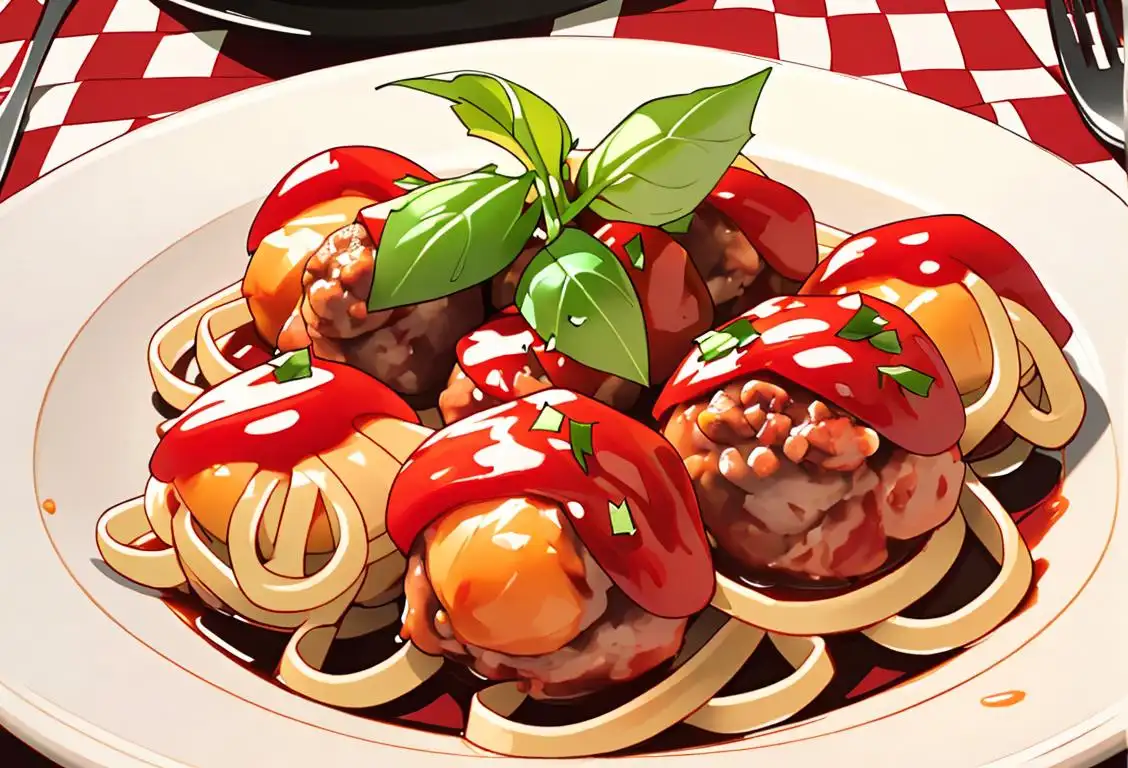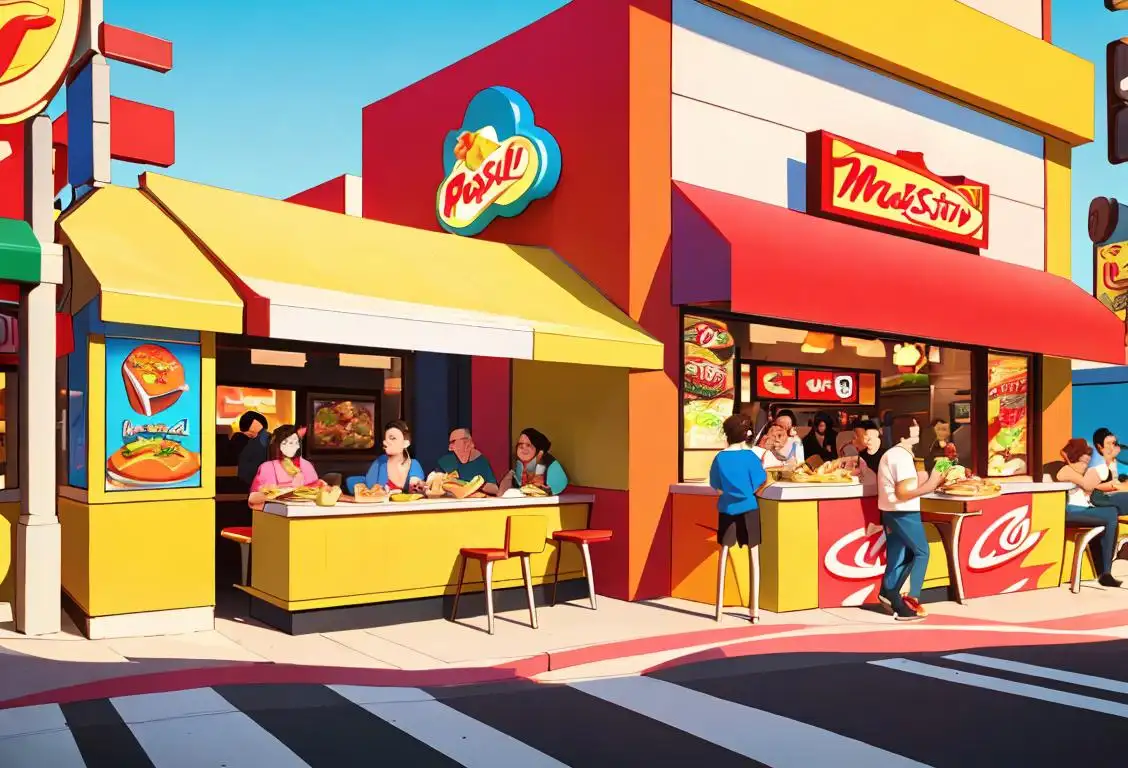National Hamburger Day

Hello, dear reader! Are you ready to embrace the mouthwatering glory of the mighty hamburger? You better be, as we're diving deep into the delicious history of National Hamburger Day! Don't worry, we brought napkins.
When is Hamburger Day?
It's national hamburger day on the 28th May.
The Unveiling of National Hamburger Day
As predictable as the gravitational pull around a black hole (but far less likely to swallow you whole unless you really overdo it), National Hamburger Day sizzles onto our calendars each year with 25926 online mentions, spiking on 28 May 2015. Named after the German city, Hamburg, where it was originally introduced as a Beefsteak à la Hamburg, it's been tantalizing taste buds across the globe for centuries.
Commonly, but Unofficially, Celebrated
The National Hamburger Day, unlike National Spongecake Day (Yes, there's a day for that too!), isn't recognized by any government bodies. Instead, it's celebrated by the people, for the people, and through the people (through their stomachs, to be precise). Where politicians and bureaucrats may falter, the People's Love for Burgers endures.
Burger Journeys
Over time, the hamburger has traveled the world in various forms. From the 'Slider' to the 'Whopper', we've celebrated National Hamburger Day with everything from fast food outlets to homemade grills. Mainly though, it’s one of the few national days that gives everyone an excuse to have a BBQ, whatever the weather!
No Bun Left Behind
In some grand act of unity, lovers of meatless alternatives have not been left behind. With the rise of meat-free patties, National Hamburger Day is for every carnivore, herbivore, and all the -vores in between. After all, what would a national day be if we didn’t all celebrate together?
History behind the term 'Hamburger'
1200s
Roaming Tartars' Sublime Delight
During the 13th century, the nomadic Tartar warriors from Central Asia, known for their exceptional horsemanship, carried raw lamb or mutton under their saddles. This technique tenderized the meat, making it easier to consume on their long journeys. These patties were called 'shashlik' and were the earliest precursor to the modern hamburger.
17th Century
Hamburg's Impact on the Dish
In the 17th century, Hamburg, a bustling port city in Germany, became known for its beef. Hamburg's population consisted of many seafarers, who brought back the idea of raw or partially cooked minced beef. Locals started shaping this meat into patties, which they named 'Hamburg steak' or 'Hamburger' after their city. This marked a significant milestone towards the creation of the iconic hamburger.
19th Century
German Immigrants Bring Hamburgers to America
In the 19th century, waves of German immigrants arrived in the United States, especially in cities like New York and Chicago. They brought with them the concept of Hamburg steak and began serving it in their restaurants. The dish gained popularity among Americans, who often enjoyed it served between slices of bread. This furthered the trajectory of the hamburger's evolution in America.
1885
Louis' Lunch—Birth of the Hamburger Sandwich
In 1885, a small lunch wagon called Louis' Lunch, owned by Louis Lassen in New Haven, Connecticut, started serving the first hamburger sandwiches. These original hamburgers were made with broiled beef patty, placed between two slices of toasted bread. This marked a pivotal moment as it established the hamburger sandwich as we know it today.
1921
White Castle—The First Fast Food Chain
In 1921, the first White Castle restaurant opened in Wichita, Kansas. It was the first fast-food chain dedicated to hamburgers. White Castle standardized the hamburger by using thin, square-shaped beef patties. Their innovative assembly line cooking method ensured fast service and helped establish the fast-food culture in America.
1948
McDonald's Introduces the Speedee Service System
In 1948, the McDonald's restaurant in San Bernardino, California, introduced the 'Speedee Service System.' Developed by the McDonald brothers, this system emphasized speed and efficiency in food preparation, further revolutionizing the fast-food industry. The McDonald's franchise focused on offering consistent and quickly served hamburgers, leading to their widespread popularity.
Late 20th Century
Global Popularity of Hamburgers
In the late 20th century, hamburgers became a global sensation. Fast-food chains like Burger King, Wendy's, and KFC, along with regional variations like the Japanese teriyaki burger and Australian kangaroo burger, proliferated worldwide. Hamburgers became a staple of both fast food and gourmet restaurants, showcasing their immense cultural impact and culinary versatility.
Did you know?
Did you know that according to the Guinness World Records, the largest hamburger ever made weighed a whopping 2,014 pounds, and required a crane to be flipped? That’s a lot of cow!Tagged
awareness food fun rememberanceFirst identified
17th April 2015Most mentioned on
28th May 2015Total mentions
25926Other days
Meatball Day
Fast Food Day
Shrimp Day
Biscuit Day
Peanut Butter And Jelly Day
First Responders Day
Cheese Lovers Day
Agriculture Day
Pumpkin Day
Trivia Day









